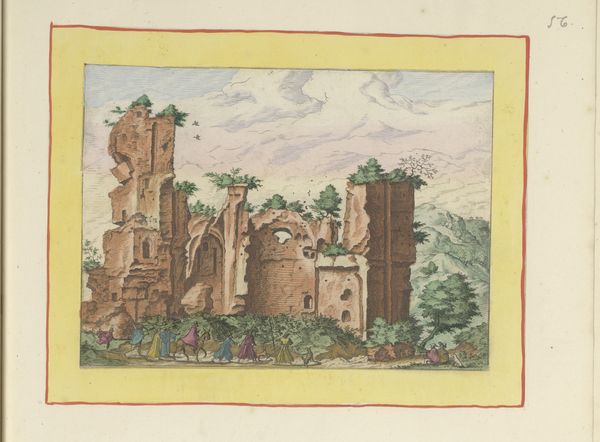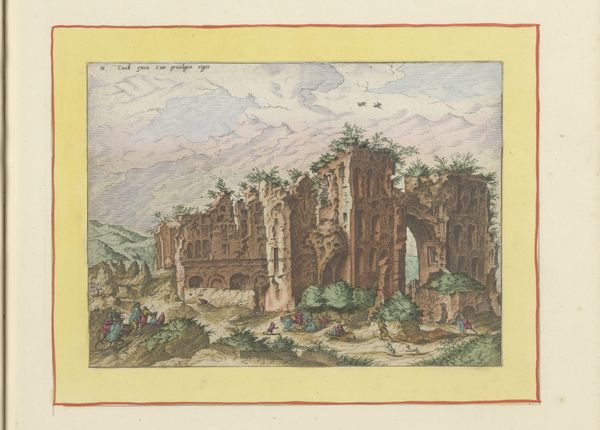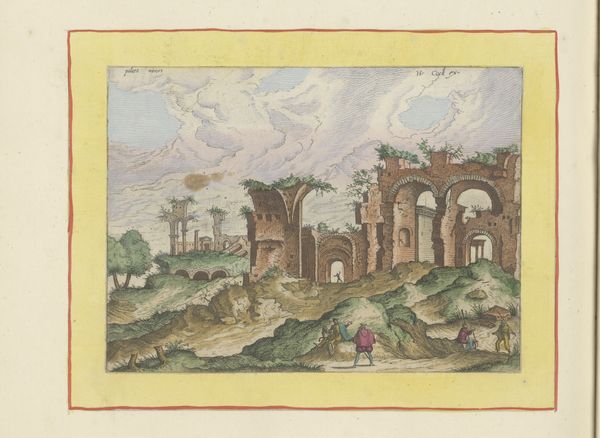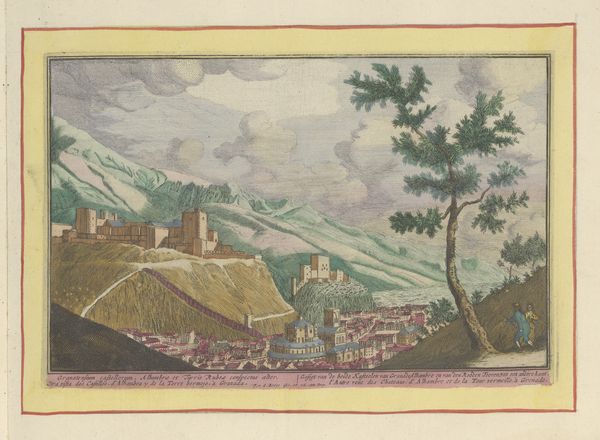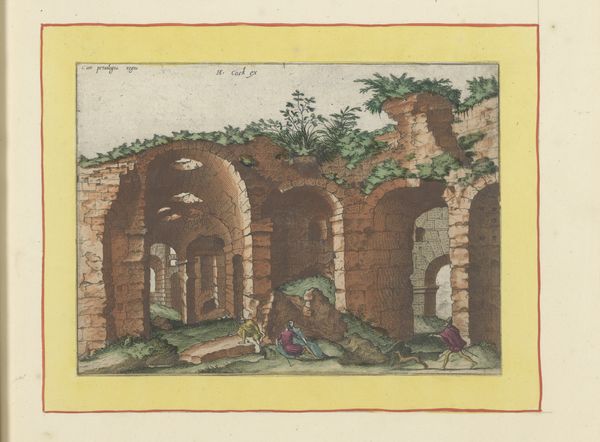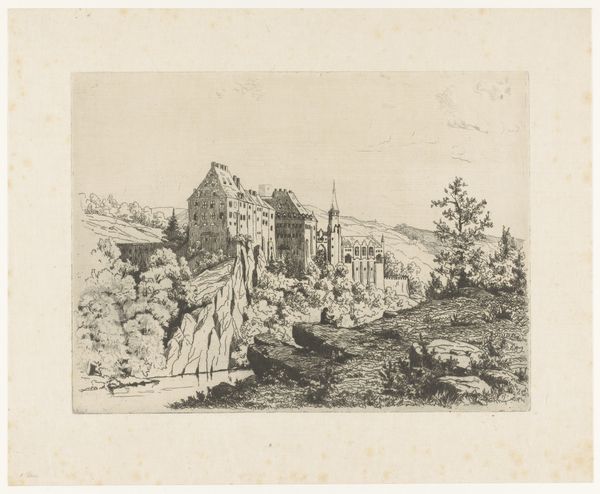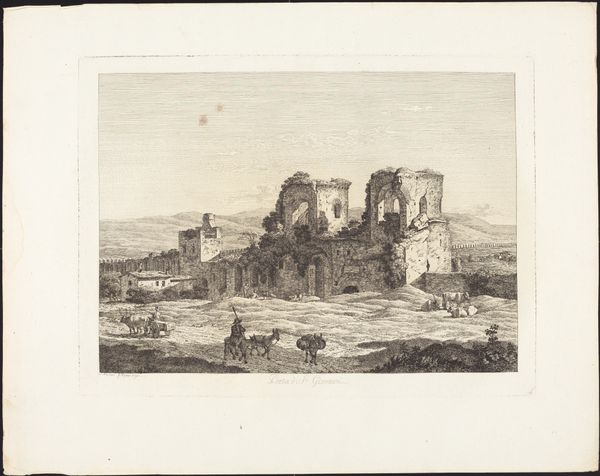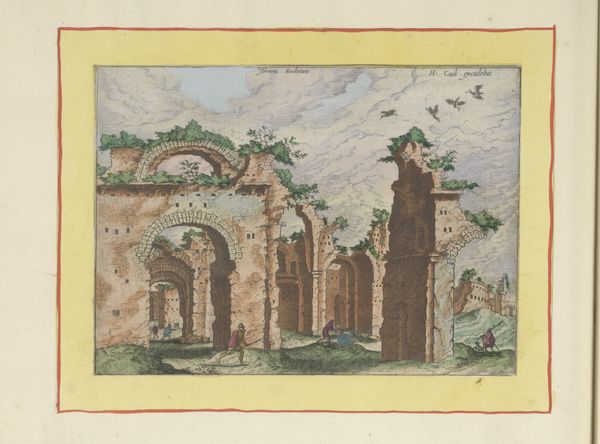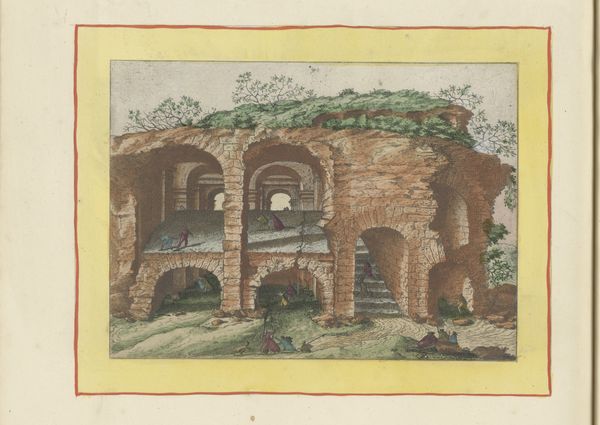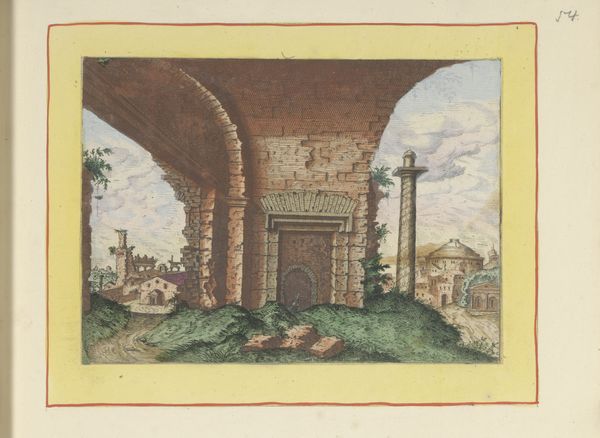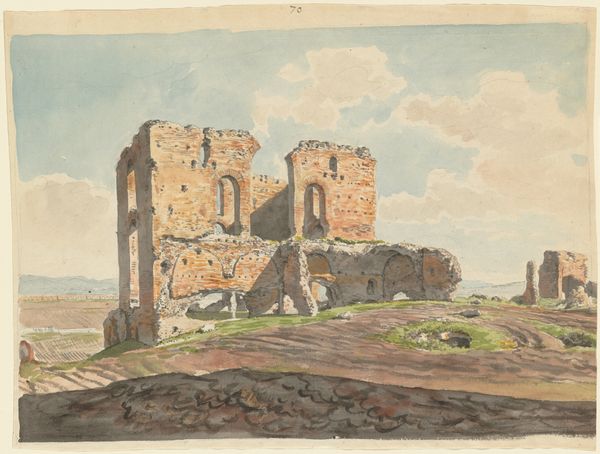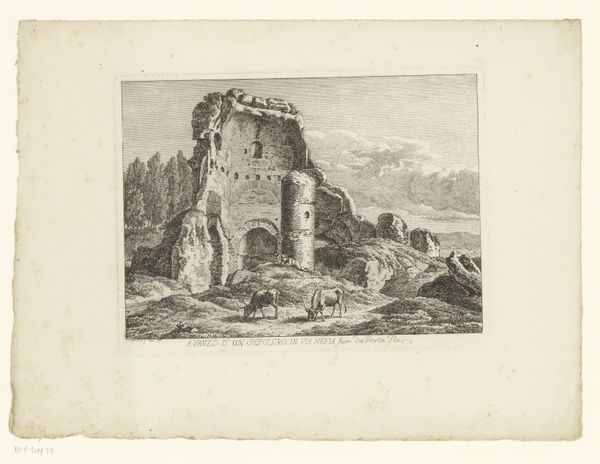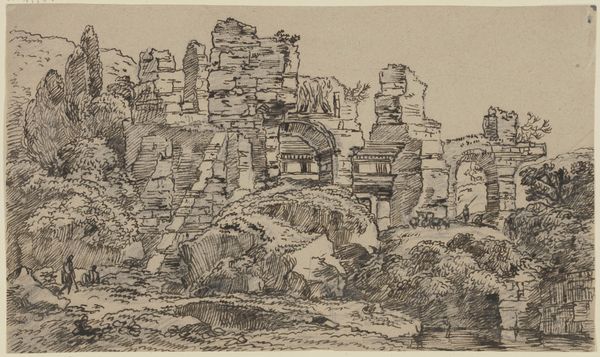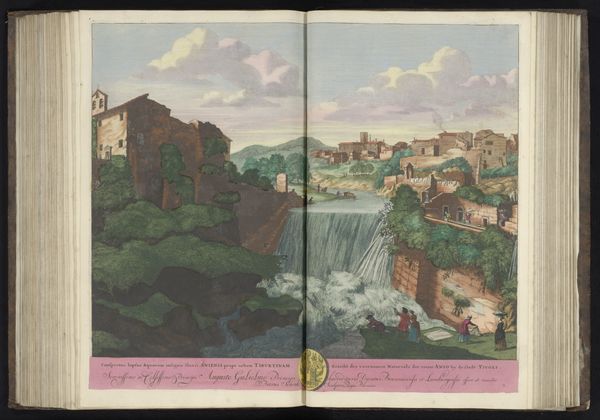
drawing, coloured-pencil
#
drawing
#
coloured-pencil
#
landscape
#
romanesque
#
coloured pencil
#
cityscape
Dimensions: height 154 mm, width 214 mm
Copyright: Rijks Museum: Open Domain
Curator: The work before us is titled "Ruïnes op de Palatijn te Rome," or "Ruins on the Palatine Hill in Rome," attributed to Joannes van Doetechum, dating from 1562 to 1717. It's rendered using drawing and coloured pencil techniques and is currently held in the Rijksmuseum's collection. Editor: It feels oddly serene, even with the subject being ruins. The muted palette of pastel skies contrasting against the ochre of the dilapidated buildings… There's a certain softness despite the implied decay. Curator: I find the composition especially interesting. Observe how the lines create a rhythm leading our eye through the scene. The ruin structures are framing elements, leading to that center focal point. The linear arrangement creates a defined depth. Editor: Agreed, and it also directs our gaze toward the process of continual decay, or maybe rebuilding as the path forward, rather than some glorified architectural composition frozen in time. These paths being cleared through the landscape imply future inhabitation, repurposing materials at hand. Curator: Note, as well, how Doetechum's technique emphasizes texture. The crumbling brickwork is rendered with a delicate touch and hatching, which further enhances its monumentality and vulnerability to the effects of entropy, really reinforcing a deep understanding of spatial logic within linear construction. Editor: Right. And think about the labor required to clear such massive wreckage! The paths cleared aren’t just physical pathways, but routes of access to reusable building materials. One can practically feel the heft of the repurposed stones. Also, these aren’t sterile ruins—see the figures populating the space? They hint at this area continuing its historical role. Curator: They definitely add a level of historical and architectural context to Doetechum’s creation. It all points to his sensitivity to scale and space within those complex arrangements of structure. Editor: Yes! The entire landscape underscores the transformation of ancient foundations through continual effort and material needs across time. An engagement between ruin, nature and humanity.
Comments
No comments
Be the first to comment and join the conversation on the ultimate creative platform.
